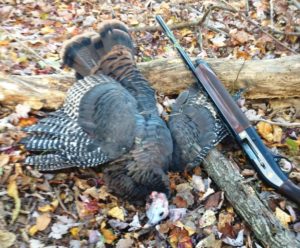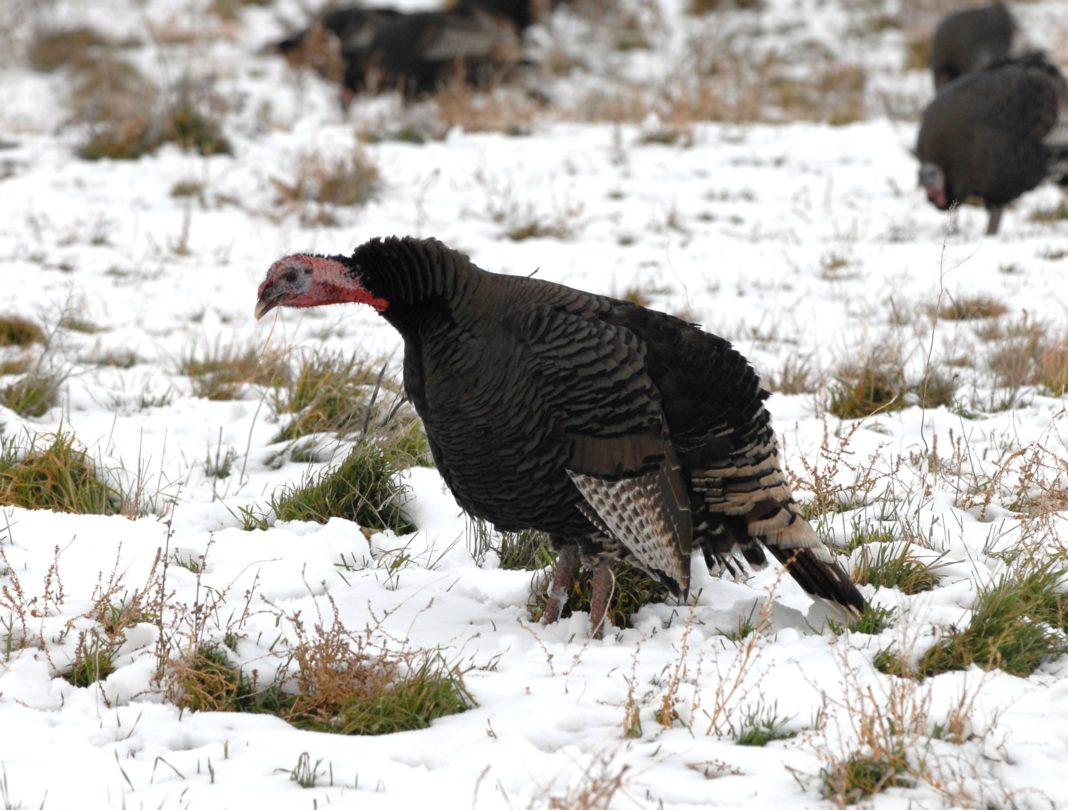For those outdoor men and women who can never get enough turkey hunting, there’s a new season in town and it’s quite different than any other turkey hunt. Called “winter turkey season,” its either a special season such as the one that Maryland offers this year from January 19-21 or an extension of turkey season that run until the end of January, just like many deer seasons. Thriving turkey populations around the country make winter turkey seasons possible and hunters need not worry about the health of birds over the winter as they might for whitetail deer. I live in the mountains of Western Maryland that have suffered huge ice and snow storms, sometimes putting an inch of ice over a foot of snow. How could a wild turkey possibly break through that barrier? Answer– they eat energy-packed buds on trees and may stay on the roost for days.
Hunting Strategies
 Weather conditions will dictate the best strategies for a January turkey. Obviously, trying to sneak on wild turkeys in crunch snow is impossible and even in soft or powdery snow, your silhouette will be seen from long distances. Early detencion makes scattering a flock difficult. Once birds are spooked, they’ll run well ahead of your location and perhaps fly together as a group. Begin as you would in October by scouting for places where turkeys feed and roost. Any type of standing ag crop like corn or soybeans will be an absolute magnet for turkeys and they tend to show up at the same time each day. Remember that wild turkeys are plum stupid about pop-up blinds so that you can put one up at noon and stay relatively warm inside waiting for birds to approach. Also, expect gobblers to still have a chip on their, well, shoulder. If it’s safe to display a gobbler decoy, ole Mr. Tom will be quick on its tail. Here’s the Realtree.com take on late seasons:
Weather conditions will dictate the best strategies for a January turkey. Obviously, trying to sneak on wild turkeys in crunch snow is impossible and even in soft or powdery snow, your silhouette will be seen from long distances. Early detencion makes scattering a flock difficult. Once birds are spooked, they’ll run well ahead of your location and perhaps fly together as a group. Begin as you would in October by scouting for places where turkeys feed and roost. Any type of standing ag crop like corn or soybeans will be an absolute magnet for turkeys and they tend to show up at the same time each day. Remember that wild turkeys are plum stupid about pop-up blinds so that you can put one up at noon and stay relatively warm inside waiting for birds to approach. Also, expect gobblers to still have a chip on their, well, shoulder. If it’s safe to display a gobbler decoy, ole Mr. Tom will be quick on its tail. Here’s the Realtree.com take on late seasons:
You’ll never see more turkeys together than between now and the so-called spring dispersal. Winter flocks are typically big, from dozens to hundreds of birds, young and old.
This time of the year, turkeys will be concentrated near the best food sources: picked-over crop fields, cow pastures and feedlots (they peck at the cow pies), plus hardwood mast in the woods and along creekbeds (where you might have found wood ducks this past fall). You’ll even see birds hitting food sources such as soft mast, weather providing.
Entire turkey populations, particularly out West in places like Nebraska and Kansas, may group up and shift home ranges this time of year. You’ve got to study where they go, day by day.









![The Best Deer Camp Chili [VIDEO] Deer Chili Ingredients, Tomatoes, Chili Spices](/wp-content/uploads/2015/10/Deer-Chili-Deer-Camp-Recipe-218x150.jpg)








![How to Call Elk Early in the Season [VIDEO]](/wp-content/uploads/2016/08/byers003-218x150.jpg)




![Idiots Disturb Hunter: How Would You Have Handled It? [VIDEO]](/wp-content/uploads/2015/10/DSC00110-e1474487693878-100x70.jpg)
![Albino Buck Shocked to Shed His Antlers [VIDEO]](/wp-content/uploads/2015/10/AlbinoDeer-100x70.jpg)